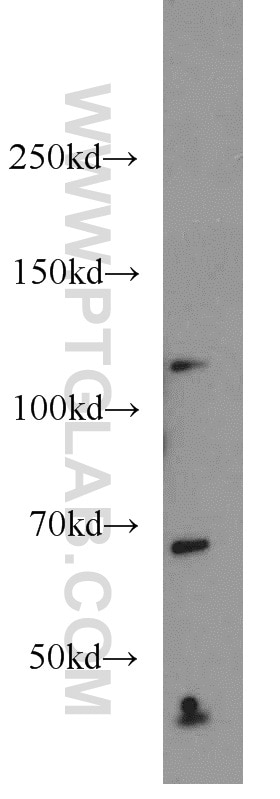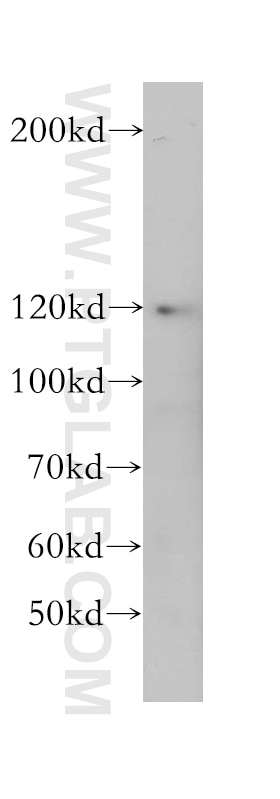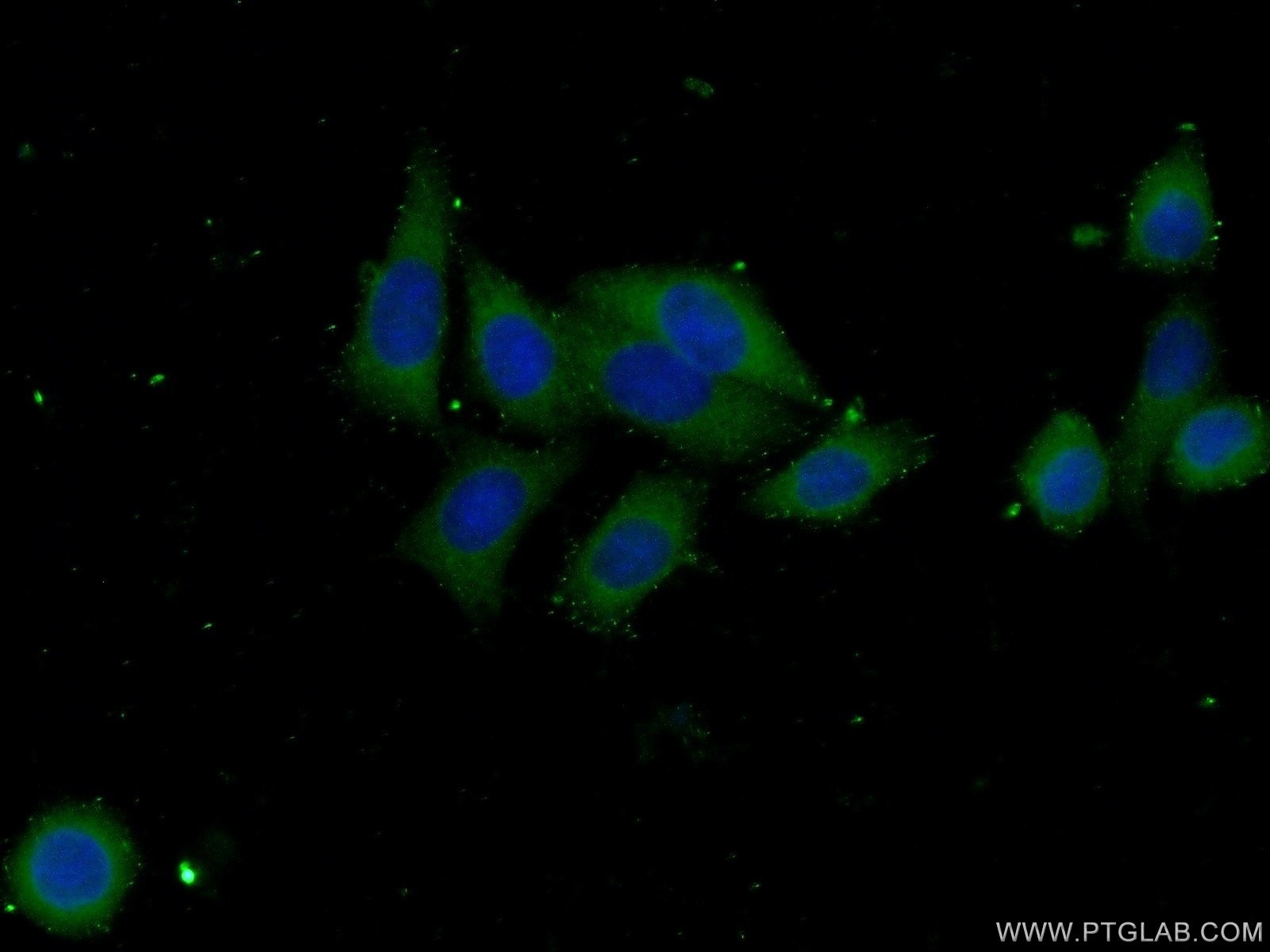SEC24C Polyclonal antibody
SEC24C Polyclonal Antibody for IF, WB, ELISA
Host / Isotype
Rabbit / IgG
Reactivity
human, mouse, rat
Applications
WB, IF, ELISA
Conjugate
Unconjugated
Cat no : 16073-1-AP
Synonyms
Validation Data Gallery
Tested Applications
| Positive WB detected in | HeLa cells |
| Positive IF detected in | HeLa cells |
Recommended dilution
| Application | Dilution |
|---|---|
| Western Blot (WB) | WB : 1:500-1:1000 |
| Immunofluorescence (IF) | IF : 1:10-1:100 |
| It is recommended that this reagent should be titrated in each testing system to obtain optimal results. | |
| Sample-dependent, Check data in validation data gallery. | |
Product Information
16073-1-AP targets SEC24C in WB, IF, ELISA applications and shows reactivity with human, mouse, rat samples.
| Tested Reactivity | human, mouse, rat |
| Host / Isotype | Rabbit / IgG |
| Class | Polyclonal |
| Type | Antibody |
| Immunogen | SEC24C fusion protein Ag9030 |
| Full Name | SEC24 family, member C (S. cerevisiae) |
| Calculated Molecular Weight | 1094 aa, 118 kDa |
| Observed Molecular Weight | 110-120 kDa |
| GenBank Accession Number | BC018928 |
| Gene Symbol | SEC24C |
| Gene ID (NCBI) | 9632 |
| RRID | AB_2186121 |
| Conjugate | Unconjugated |
| Form | Liquid |
| Purification Method | Antigen affinity purification |
| Storage Buffer | PBS with 0.02% sodium azide and 50% glycerol pH 7.3. |
| Storage Conditions | Store at -20°C. Stable for one year after shipment. Aliquoting is unnecessary for -20oC storage. 20ul sizes contain 0.1% BSA. |
Background Information
COPII-coated vesicles mediate anterograde transport from the ER to the Golgi apparatus. COPII is composed of three parts: two coat protein complexes (Sec23/24 complex and Sec13/31 complex) and one small GTP-binding protein, Sar1 (PMID: 9568718). Sec24 subunit of the coat complex has been implicated in cargo recognition (PMID: 17316621). In mammal cells there are four Sec24 isoforms, termed Sec24A, Sec24B, Sec24C, and Sec24D (PMID: 10329445).
Protocols
| Product Specific Protocols | |
|---|---|
| WB protocol for SEC24C antibody 16073-1-AP | Download protocol |
| IF protocol for SEC24C antibody 16073-1-AP | Download protocol |
| Standard Protocols | |
|---|---|
| Click here to view our Standard Protocols |




